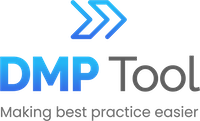What is a Data Management and Sharing Plan?
A data management and sharing plan, or DMS Plan, is a document that outlines how data will be handled during and after a research project. Many funding agencies, especially government sources, require a DMP as part of their application processes. Even if you are not seeking funding for your research, documenting a plan for your research data is a best practice and will help your data comply with Harvard's policies for responsible data management.
A DMS Plan is a living document: Research is all about discovery, and the process of conducting research sometimes requires you to revise your intended path. Your DMS Plan is a living document that you may need to alter to reflect changes in your research. Remember, any time your research plans change, you should review your DMS Plan to ensure that it meets your needs.
Elements of a DMS Plan
Funding agencies, including the National Science Foundation (NSF) and the National Institutes of Health (NIH), have laid out specific criteria for what should be included in a data management and sharing plan.
As some funding agencies do not provide specific guidelines, below is a list of typical data management plan elements. You should review specific guidelines for data management planning from the funding agency you are working with. Elements of your DMS Plan may be reused in your protocols and in the Institutional Review Board (IRB) and methodology descriptions.
If you would like assistance completing a data management plan for a grant proposal, see if you are eligible for Countway Library's Data Management Plan Review Service.
Types of data
What is the source of your data? In what formats are your data? Will your data be fixed, or will it change over time? How much data will your project produce?
See Collect & Create
Contextual details (metadata)
How will you document and describe your data?
Storage, backup, and security
How and where will you store and secure your data?
See Store & Manage, Data Security, and Data Safety
Provisions for protection/privacy
What privacy and confidentiality issues must you address?
See Data Security, Data Safety, and Clinical Data
Policies for re-use
How may other researchers use your data?
Access and sharing
How will you provide access to your data by other researchers? How will others discover your data?
See Share & Disseminate and Access & Reuse
Archiving and providing access
What are your plans for preserving the data and providing long-term access?
Roles and plan oversight
Who will be responsible for aspects of data management throughout the project, and what resources are required for implementation?
Example DMS Plans
Write a DMP
 It can be helpful to use a software like DMP Tool to create high-quality DMS Plans that meet the requirements of their specific funding agency. As a partner institution, Harvard Affiliates can log in with their Harvard Key to access university-specific guidance and resources. Learn more about DMP Tool.
It can be helpful to use a software like DMP Tool to create high-quality DMS Plans that meet the requirements of their specific funding agency. As a partner institution, Harvard Affiliates can log in with their Harvard Key to access university-specific guidance and resources. Learn more about DMP Tool.